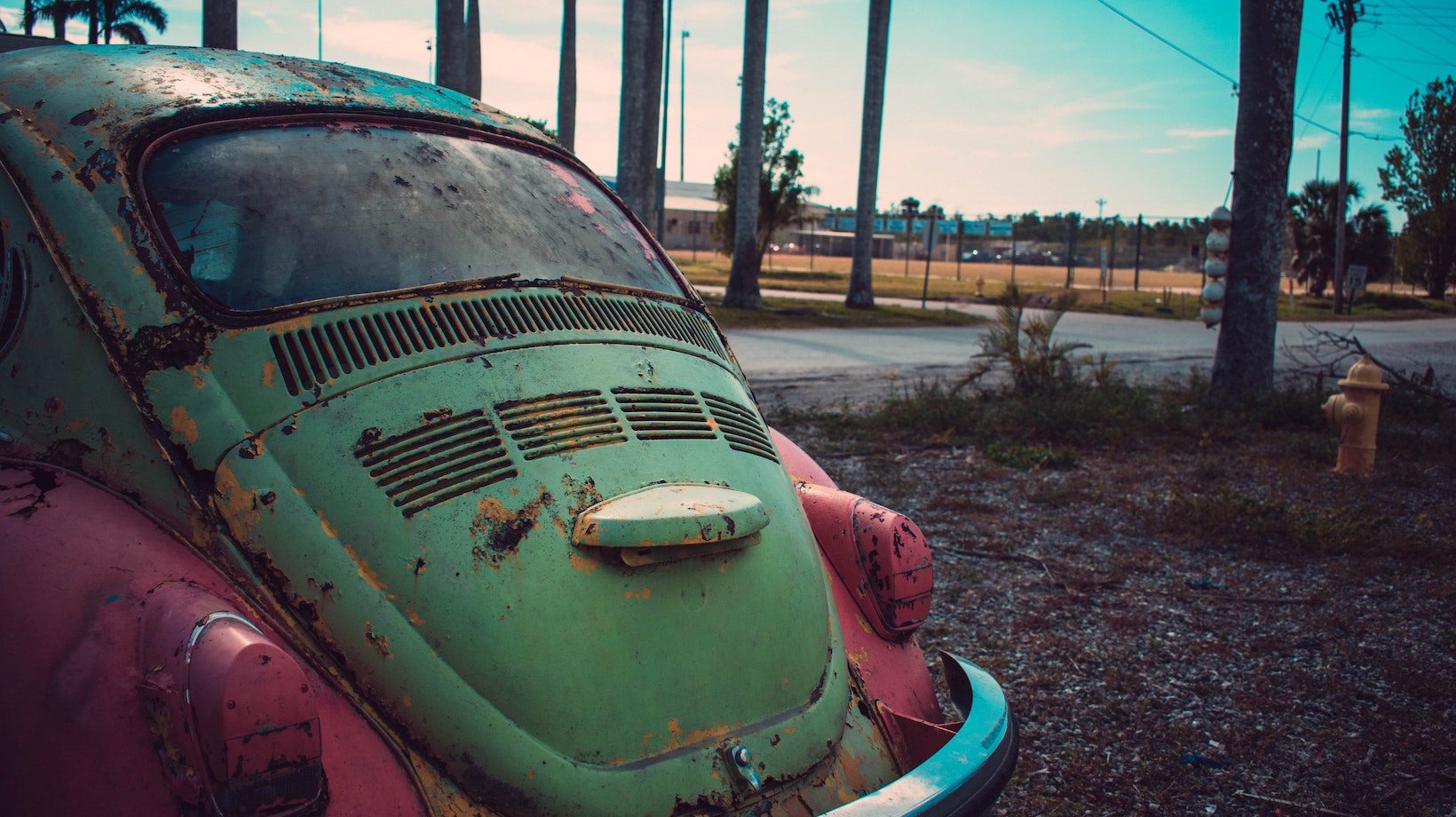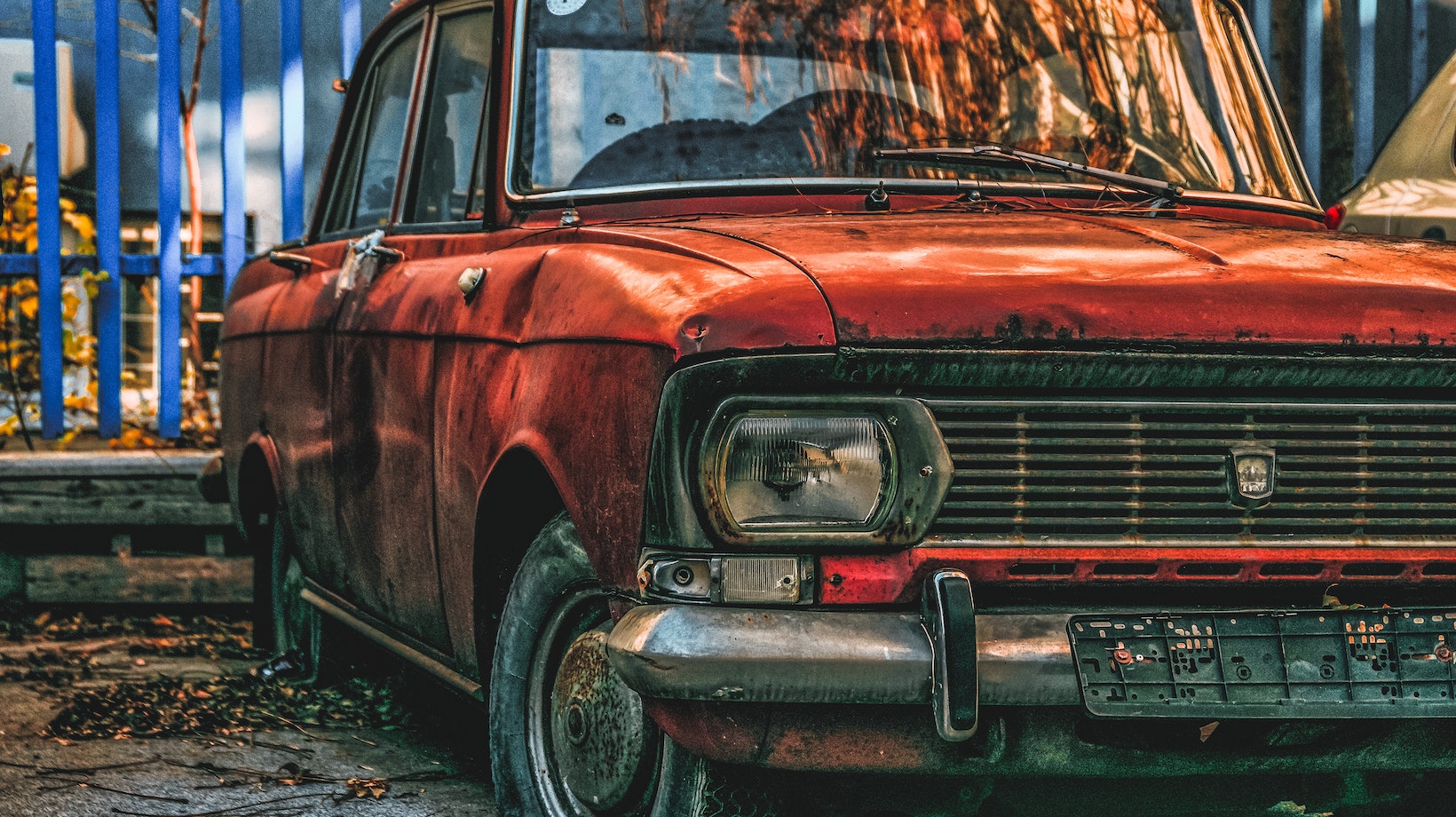
Car Rust and Its Causes
Let’s dive into the world of car rust. Why does it happen and what causes it? Car rust, or iron oxide, is a reddish-brown compound that forms when iron reacts with oxygen in the presence of water or humidity. It’s not just an eyesore, but also a serious threat to the structural integrity of your vehicle.
We’re all familiar with those unsightly orange patches that start to appear on our vehicles over time. They may seem harmless at first, but if left untreated, they can grow into full-fledged rust holes that compromise the safety of our cars. But why does this happen?
Firstly, exposure to elements is often the main culprit behind car rusting. When rainwater or salty road spray (in colder climates where salt is used for de-icing roads) gets trapped in small crevices and corners of your car’s bodywork where it doesn’t dry out quickly enough, it can lead to corrosion.
Secondly, we have wear and tear from daily use. Over time, paintwork can become chipped or scratched by stones or other debris hitting against the surface while driving which exposes bare metal underneath.
Lastly there’s poor maintenance to consider as well. Neglected cleaning routines could allow dirt and grime to accumulate on the surface which might contain moisture attracting particles leading to potential rust formation. Major causes for car rust:
- Exposure to elements
- Wear and Tear
- Poor Maintenance

Car Rust Hole Repair
We’ve all been there. You’re washing your car, and you spot it – a minor rust hole. It’s small, but left unchecked, this pesky problem could turn into a major headache. Fear not! We’re here to walk you through how to deal with these little nuisances. First things first, we’ll need some tools for the job. Here’s what you’ll need:
- Sandpaper (220 to 600 grit)
- Primer
- Body filler
- Paint matching your vehicle color
It’s time to get down and dirty now. Start by sanding around the rusted area using the 220-grit sandpaper. You’re aiming to remove any loose rust and create a smooth surface for the body filler.
Next up is applying that body filler. Make sure it’s mixed well before spreading it over your sanded area. This stuff hardens pretty quickly, so you’ll want to work fast! Once it’s dry (which usually takes about 20 minutes), grab your higher grit sandpaper and give it another go until it’s nice and smooth.
Now comes painting time! But hold on — don’t forget primer first! After applying a layer of primer and letting it dry thoroughly (usually overnight), we’re ready for painting. Try spraying lightly at first then build up gradually; too much paint can cause drips or runs.
Tackling Major Car Rust Hole Repairs
Let’s be frank, major car rust hole repair can seem a daunting task. This is especially true if you’re not well-acquainted with auto body work. However, we assure you that with the right tools, patience, and our guidance, it’s entirely possible to restore your vehicle to its former glory.
First off, it’s important to acknowledge that safety comes first when dealing with major rust repairs. You’ll need protective gear such as goggles, gloves and a mask to shield yourself from harmful particles. Don’t skip on this; nothing matters more than your well-being.
The next step involves assessing the extent of the damage. It’s crucial to thoroughly inspect the affected area and beyond for any hidden patches of rust. Often what starts as a small blemish can quickly spread like wildfire beneath paintwork or undercarriage components.
There you have it – tackling major car rust hole repairs isn’t as scary as it may initially seem! Remember, practice makes perfect so don’t expect show-room results on your first try. Be patient with yourself; restoring cars is both an art and science that requires time mastered skills.
Despite this guide being comprehensive enough for most situations there are times where professional help might be required. If ever in doubt about your ability or safety while conducting these repairs always consult an expert mechanic or body shop professional beforehand – better safe than sorry!






































